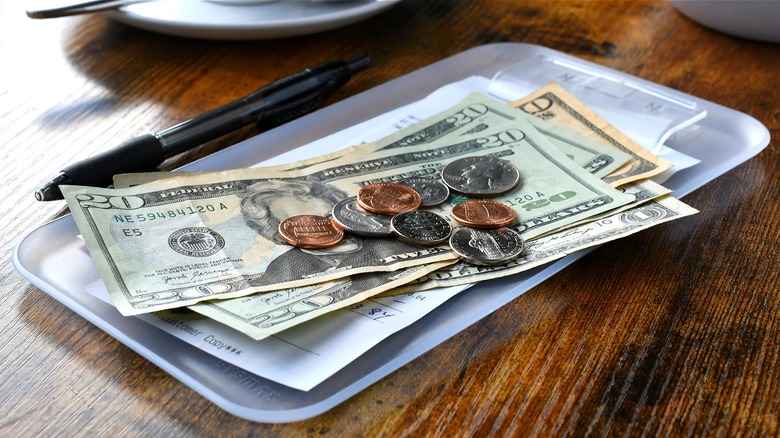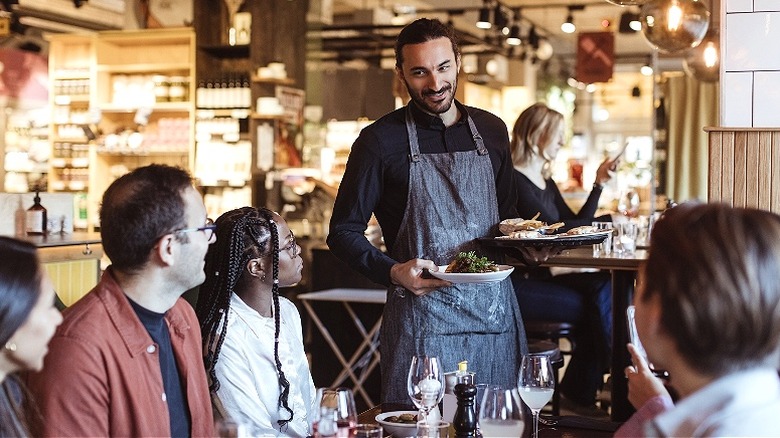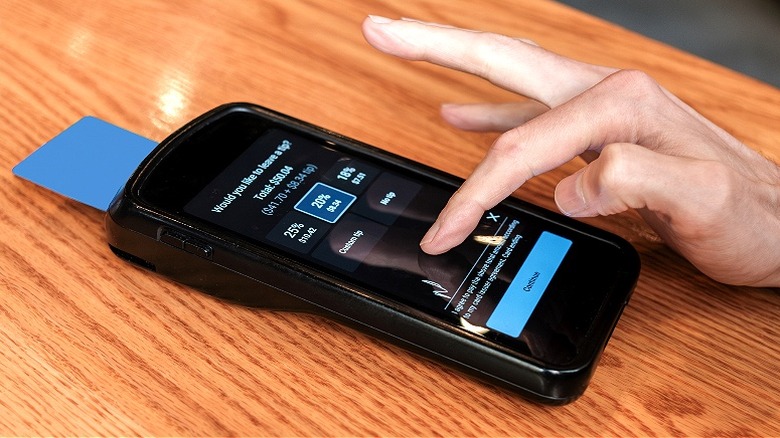Restaurant Workers On How Changes In Tipping Culture Have Affected Them
Across social media, folks are expressing their frustrations with America's evolving tipping culture, known as "tipflation" or "tipping creep." For service workers, especially those at restaurants and bars, it's always been customary to leave them a tip at an amount of your choosing (here's a guide on how much money you should tip your bartender). But in recent years, customers have been asked to tip beyond restaurants.
Whether you're checking out at Starbucks or purchasing a T-shirt at a concert (speaking of which, why does concert merchandise cost so much?), the end of many transactions nowadays involves the worker flipping an iPad around and telling you, "It's just going to ask you a quick question." You're then faced with the dreaded tip screen and put on the spot as it asks which percentage, if any, you'd like to leave. Many are getting fed up with this phenomenon. People are becoming fatigued with modern-day tipping culture. However, is this fatigue negatively impacting restaurant workers, the individuals who truly rely on tips to sustain a living?
Tipping creep isn't negatively impacting restaurant workers
Many Americans may be fed up with tipping culture, but this weariness hasn't stopped most people from continuing to tip those whom it benefits the most: restaurant workers. According to the report "Beyond Gratuity: Perspectives of Restaurant Staff on Tipping Practices" by SpotOn, a software and payments partner for restaurants and small businesses, "tipflation" hasn't drastically impacted the restaurant industry for the worst.
Of the study's respondents, 36% said they haven't experienced a drastic change in tips due to the country's "tipflation," while 47% answered feeling good about tipping culture in restaurants. Also in the study, 64% of the restaurant workers surveyed shared that they didn't believe "tipflation" — and having non-restaurant entities (like a Starbucks) putting customers on the spot to tip — has had any impact on the restaurant industry itself. In fact, 8% revealed that they think it's been beneficial.
This could be for a number of reasons. Some customers may have formed a better habit of tipping thanks to constantly being presented with the option, while other people who are feeling the effects of "tipflation" may be thrilled to finally tip an actual service worker.
Tip technology proves beneficial for restaurant workers
A digital tipping screen may be seen as a nuisance by customers when they're presented with it at Starbucks and similar establishments, but, according to the report by SpotOn, it's actually having a positive effect overall in the restaurant industry.
Since tipping is an expected part of the dining-out experience, customers are less likely to become rattled when asked on a device what percentage they'd like to leave. In fact, some restaurant workers have found that such devices result in larger tips beyond their expected 15% to 19%, rather than the annoyance that the devices are met with in non-restaurant settings. Largely, having pre-calculated tip percentages to choose from alleviates the hassle and, oftentimes, confusion, of customers having to do the math themselves.
A 2023 Pew Research Center survey on tipping culture in America found that a net 92% of people either "always" (81%) or "often" tipped servers when dining out at a restaurant. Yet, only a net 12% of people said they tipped at food establishments where there were no servers, like at a fast-food or fast-casual restaurant. This, interestingly, was 13% less than those who said they tipped at a coffee shop.


